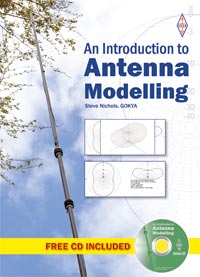Over the past month we had a solar flux low of 76 and a high of 92 (on 13th March). But we've also had some serious solar flares. We had a geomagnetic A index low of 1 on two occasions and a high of 28 in the first week of April.
In fact, the A index was still climbing as I wrote this and Auroral conditions were being recorded on 6m and 2m
We are still in the equinox period as far as HF propagation goes. These tend to be the best months for working North-South paths, such as UK to South Africa.
So let's look at each band and what you can expect.
On 160m (1.8MHz or Top Band), look for short-skip and DX openings at night. Little daylight skip will be possible due to absorption, but openings out to 1,300 miles and occasionally further afield can be expected at night with conditions peaking around midnight and again at sunrise (greyline).
80m (3.5MHz) will generally follow the characteristics of Top Band at night, but will also provide good openings out to around 250-300 miles during the day. These will lengthen to around 500-2,300 miles at night with fairly good DX opportunities at times.
40m (7MHz) Forty metres should open to DX in an easterly direction at sunset. Openings to the west should be possible after midnight and should peak just before sunrise. Contacts should be possible during the day, although lower critical frequencies may mean that it is difficult to work other UK stations while perfectly possible to talk to European stations. If the flux rises then 40m may open up to NVIS contacts around the UK, but 80m will be better.
20m (14MHz) is likely to be the best DX band between sunrise and sunset. The bands may occasionally open after dark, perhaps to the southern hemisphere. Good openings will be possible during daylight hours out to around 2,300 miles.
17m/15m (18MHz/21MHz) should provide fairly good DX openings during daylight hours, especially to Africa and South America, with 17m being open more often than 15m. If we get more sunspots 15m will become a great DX band, as it did at times in February. Both bands are likely to close after sunset.
12m/10m (24MHz/28MHz) These could be disappointing bands if the solar flux remains low. If the solar flux heads towards the high 80s/90s then openings will occur on both bands, although 24MHz will open first. If it breaks the 100 mark then expect to see some good DX openings on 10m. Expect to see Sporadic E start up at the end of the month, but more of that in May.
You can find HF short-path propagation prediction charts from the UK at:
http://www.infotechcomms.co.uk/propcharts/
You can also listen to Steve G0KYA's monthly HF propagation podcast on iTunes or at http://www.g0kya.blogspot.com/
Steve G0KYA RSGB Propagation Studies Committee










No comments:
Post a Comment